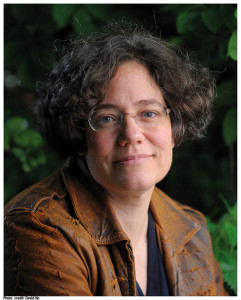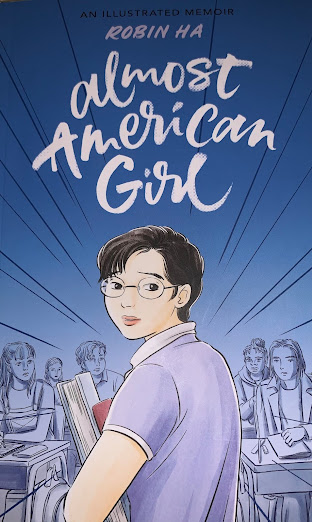A Thousand Sisters by Elizabeth E. Wein
A Thousand Sisters by Elizabeth E. Wein
Review:
"A Thousand Sisters isn't an academic research. It's an accessible...introduction to a fascinating topic, and it's aimed at young readers who mostly won't have any more Russian than I do," 一 from Elizabeth Wein's Author's Note in A Thousand Sisters, pg. 370Biography:
Instructional Resources:
A small collection of photographs of some of the women who served as pilots during World War II; could be used during teaching as a visual aid to allow students to put faces to the names of these women.
This brief video could be played as part of introducing the book to summarize what the Soviet Union was and help students better understand and frame the historical facts of the book.
5. World War II
A multi-sectioned article covering the background and origins of World War II that includes links to further reading, pictures, and videos. This source could be given to students to read prior to reading the book in order to ensure they are well-versed in the history of the time.
6. The Last Female Pilot of World War II
While a very short video, and not specifically about Soviet female pilot, this would be a good resource to share in class to allow students to hear, even briefly, what it was like to be an airwoman of World War II from a woman who was one herself. Though Mary Ellis has since passed, at the time the video was shot, she was the last one that still remained, making the video all the more important and exclusive.
7. Raymonde De Laroche: The First Female Pilot
This article provides a quick summary about Raymonde De Laroche, a French woman who was the first woman in history to ever pilot an aircraft. This is a good source to give to students to learn about the trailblazer of female pilot’s herself, especially as she remained determined throughout her life to fly, even after having crash-landed and having been badly injured multiple times. As a result of her perseverance, she will forever hold the title as the world’s first ever female pilot and have paved the way for generations of women to come.
8. Photographs of Ten Female Soviet Union Pilots
A list of ten of the most skilled Soviet female pilots that includes a photo of them each. Not only does this add to the names already mentioned in A Thousand Sisters, but it also opens the door for further research and learning. This source could potentially be the starting place for an assignment where students could pick one of the women listed here to research and write about.
Instructional Activity:
Preview:
The purpose of this lesson is to utilize the information gained from A Thousand Sisters regarding gender equality and human rights and translate this using narrative and other creative writing elements. Students will choose a character from the book and write a first-person narrative regarding their reactions to gender inequality and one action they took to change it.
The narrative is based on the book, which provides some information on actions taken to fight against inequality, but students will develop more personal accounts by imagining their character’s reactions and actively thinking about what it must have been like to be one of these women during this time. The assignment will be one page long and focus on a singular event of the student’s choosing, though it must focus on some inequality and steps this character did or could have taken to change this.
In the next class meeting, students will bring their one-pagers and as a class, we will do an activity where students will take their papers and fold them into paper airplanes, in recognition of these women in the airforce. There will be a flying contest, where the plane that goes the farthest will win a prize. The instructor will also give a prize to the plane that went the least far and iterate that only those who seem to go the farthest get the prize they have been working for. In reality, everyone has been working toward the same goal but only some get the prize. Everyone deserves the prize because they all worked hard to achieve it. Fighting for human rights is the same. Everyone deserves them but many people fight for them and do not get the rights they seek. It’s important to recognize the people who came before us and paved the way for us to continue fighting and receive some of the rights they never saw. The instructor will then give prizes to the rest of the class.
California Common Core Standards:
Writing Standards (9th-10th)
3. Write narratives to develop real or imagined experiences or events using effective technique, well-chosen details, and well-structured event sequences.
a. Engage and orient the reader by setting out a problem, situation, or observation, establishing one or multiple point(s) of view, and introducing a narrator and/or characters; create a smooth progression of experiences or events.
d. Use precise words and phrases, telling details, and sensory language to convey a vivid picture of the experiences, events, setting, and/or characters.
4. Produce clear and coherent writing in which the development, organization, and style are appropriate to task, purpose, and audience. (Grade-specific expectations for writing types are defined in standards 1–3 above.)
Resources and Preparation:
Paper Airplane Examples: |
| Fig. 1. Dart from "How to Make a Paper Airplane: Easy Steps with Pictures;" origamiway.com https://www.origamiway.com/plane-dart.shtml |
 |
| Fig. 2. Spy Plane from "How to Make a Paper Airplane: Easy Steps with Pictures;" origamiway.com https://www.origamiway.com/plane-spy-plane.shtml |
 |
| Fig. 3. Nakamura from "How to Make a Paper Airplane: Easy Steps with Pictures;" origamiway.com https://www.origamiway.com/plane-nakamura-lock.shtml |
Pick a character from the novel (remember, you will be writing from their perspective)
Find a moment in the text where your character experiences gender inequality (prevented from joining a group, doing a specific action, or receiving the same rights offered to men; can also include negative reactions from others)
Find a moment where they react against or combat the inequality (whether they are successful or not)
Write a one-page narrative as your character reacting to the inequality experienced and what was done to combat it (this is written in the first-person point of view; use the book as a reference but be creative as you explain how your character felt and why it’s important that they reacted the way they did)
Bring in one-pagers to class
Paper airplane contest!
Bibliography
Figures 1, 2, & 3:
Cabodbod, Alliah. “How to Make Paper Airplanes?” How to Make a Paper Airplane: Easy Steps with Pictures, www.origamiway.com/paper-airplanes.shtml. Accessed 14 May 2023.
Author Image:
Hub, Author The. “One Thing Leads to Another: An Interview with Elizabeth Wein.” The Hub, 26 Mar. 2021, www.yalsa.ala.org/thehub/2013/10/03/one-thing-leads-to-another-an-interview-with-elizabeth-wein/.
Other Sources
" Something about the Author. . Encyclopedia.Com. 5 May. 2023 .” Encyclopedia.Com, 15 May 2023, www.encyclopedia.com/children/scholarly-magazines/wein-elizabeth-eve-1964.
Wein, Elizabeth. A Thousand Sisters (p. ii). HarperCollins. Kindle Edition.


